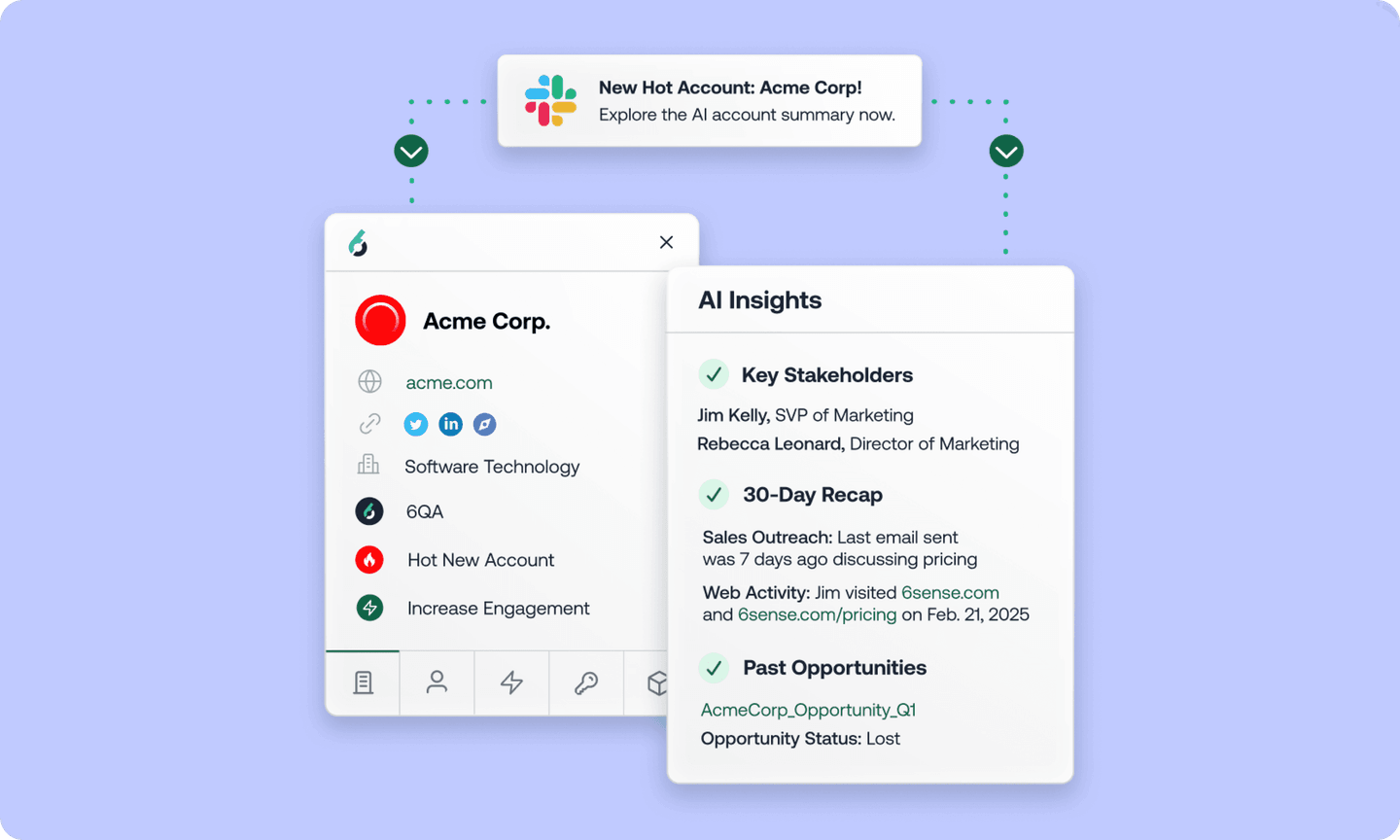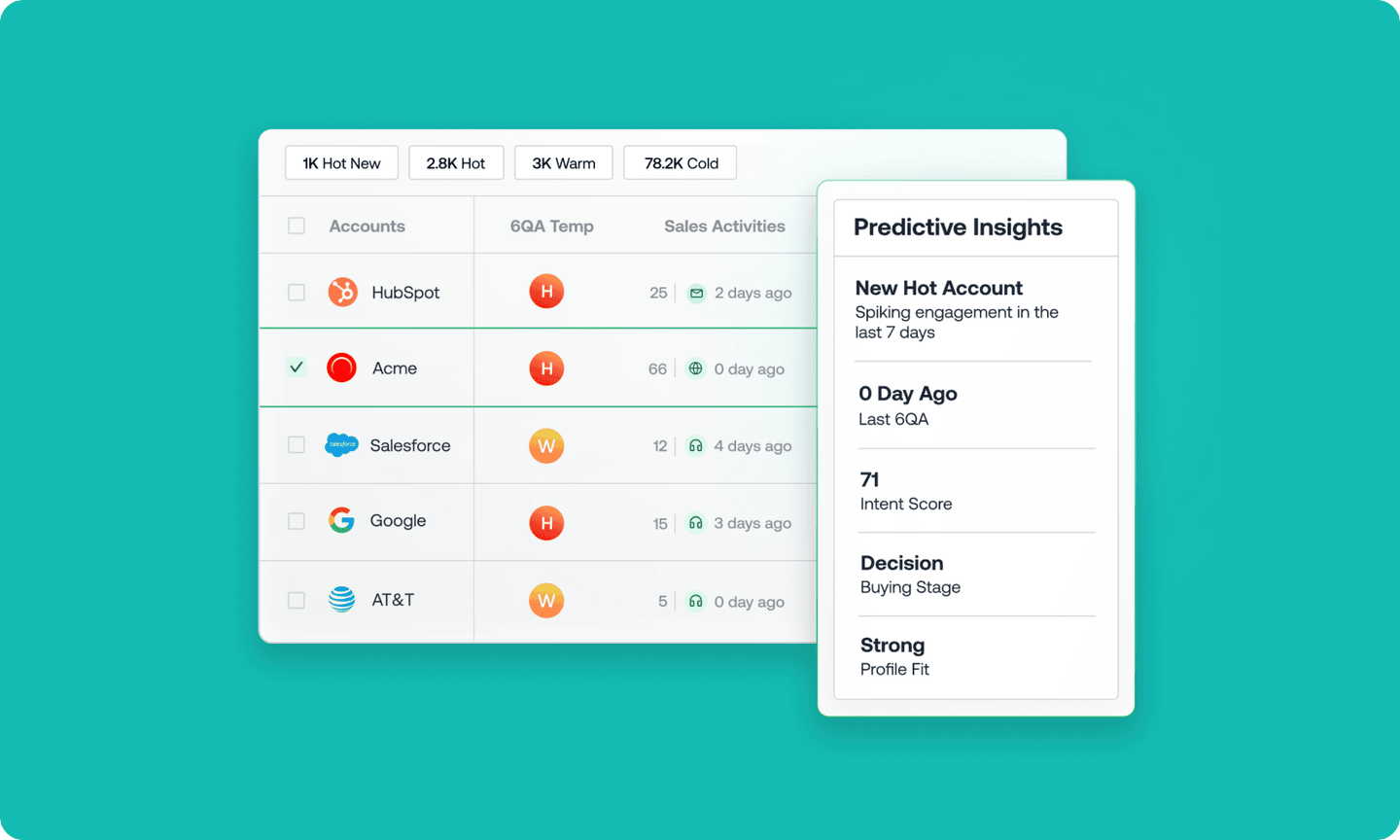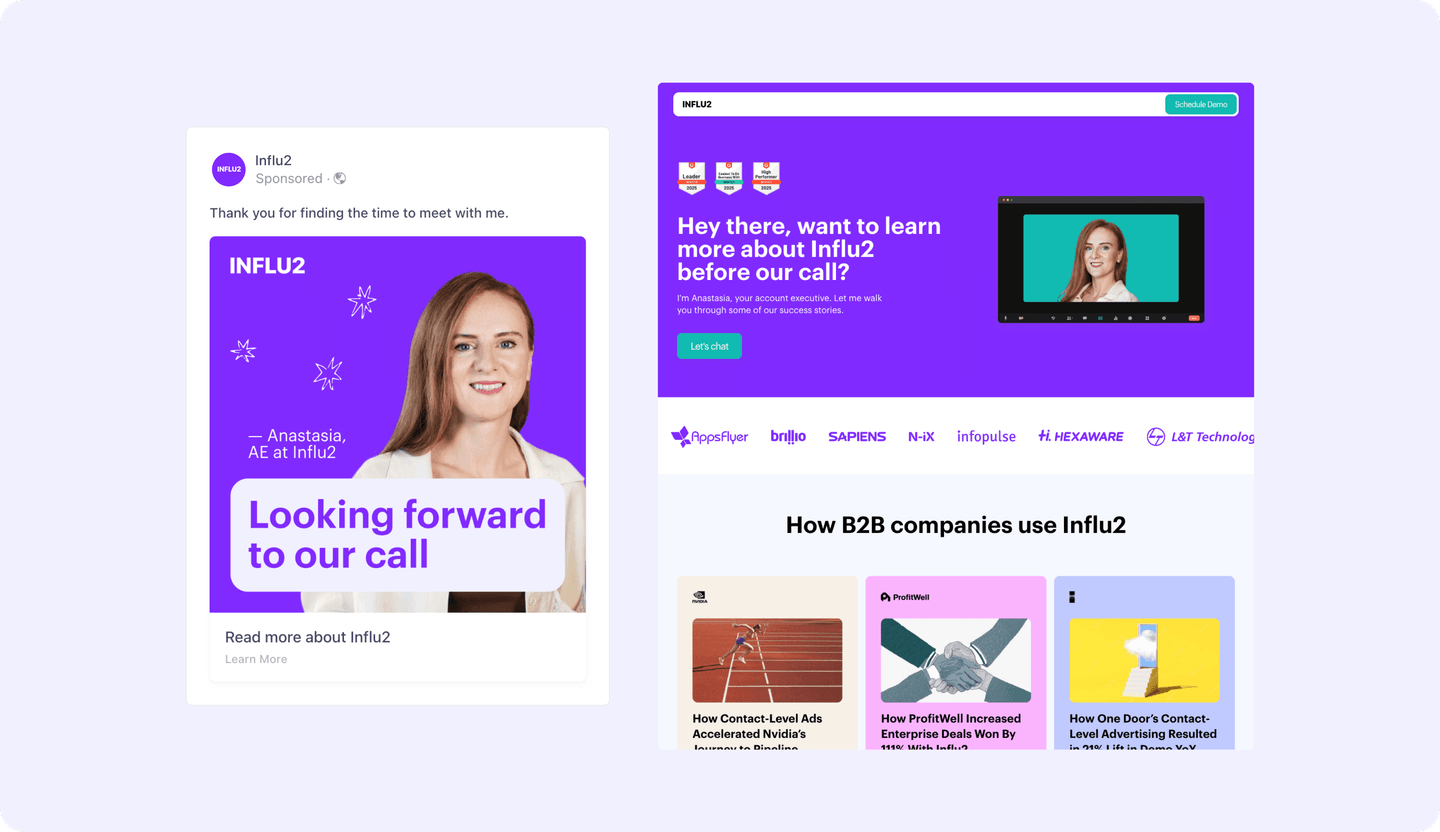What 6sense Intent Data Gets Right (And Where it Falls Short)
B2B buyers are like teenagers with a high school crush: they want to know more about you, but they don’t always want you to know they’re interested.
That’s why buyers jump through hoops to avoid being “detected” by your team.
That ebook? They’re giving you a fake email to download it.
That demo request form? Less than 2% of people will fill it out.
The problem is, by the time someone actually raises their hand to talk to your team, a hundred other potential buyers have come, perused, and left without a trace (all under the radar and uncontacted).
Intent data is like the friend who sits next to the crush in homeroom and picks up on all the little signals that the crush is into you, even if they haven’t said a word.
In the same way, intent data picks up on subtle digital behaviors—visits to key pages, keyword searches, ad engagement—that signal a buyer’s interest before they raise their hand.
The question is: where do you get your intent data from? And how do you use it?
6sense intent data has been a popular choice for a while. But is it the solution your GTM team needs? Or is there another option you may have missed?
Let’s find out.
What 6sense intent data does well
6sense gives you a window into what your target audience is doing online by combining data from multiple sources.
Plus, 6sense intent data is keyword-based, so you can enter keywords that are relevant to your business, and anytime those keywords are researched across the B2B web, 6sense picks them up.
Here’s what 6sense users say they like about the tool:
Provides intent data from multiple sources
First and foremost, 6sense pulls data on what’s happening on your own website or in your CRM. Then, it combines that data with intent signals from across the web, pulled from partners like G2, Bombora, TrustRadius, PeerSpot, and others.
This shows you:
- Keyword research across millions of pages
- Company data, like firmographics, technographics, and IP data
- Contact data, such as job changes and contact information
All of this is combined to show which accounts are showing intent.
AI-powered insights that tell you what to do with the data you see
6sense claims to capture one trillion buyer signals every single day. That’s an overwhelming amount of data to handle, which is why they use AI to help translate that data into actions for users.
This includes:
- Tracking and notifying online behavior: The AI flags an account when activity spikes, indicating they’re more likely to be in the market.
- Account prioritization: It tells you which accounts to focus on first, based on their activity across the web.
- AI summaries: 6sense will take all the data from an account and give you a summary of what’s happening.

Tools to help keep your data clean
6sense collects a lot of data, but not all of it is accurate or helpful. That’s why they also offer tools to identify and correct duplicates, standardize abbreviations and word variations, and organize all the data by relevant categories.
After that, 6sense will also match the behavioral signals they’ve captured to accounts in your CRM.
Where 6sense intent data falls short
While 6sense offers a wealth of data and insights, it isn’t a magic wand. Here are some areas where its intent data can fall short for ABM teams:
You can’t get contact-level intent data until prospects raise their hand
Once someone fills out a form, that goes into your CRM and you’ll see who it is (there are some limitations based on IP and cookie data). But until then, all you’re getting are account-based insights.
Someone from Microsoft is interested in your product. That’s great, but until you know who, you’re just throwing darts at the wall hoping something sticks. You can use this insight to target the company, but your interested buyer is still a mystery.
Intent data doesn’t show you companies who are ready to buy. Intent data shows you companies who are MORE LIKELY to buy. Intent signals are at a company level, and we sell and market to individuals.
While account-level intent data can help you organize your GTM motion, it doesn’t tell you anything about the individual contacts who might be interested in talking to you.
Pro-tip: Influ2 captures contact-level intent signals across ads, third-party content, search, and social without relying on form-fills, Cookies, and IP addresses. So you see, "John Smith from Acme searched {relevant keyword}" instead of "Someone from Acme."
Your data hygiene habits can skew your results
The insights you get are only as good as the data they rely on. If your CRM is plagued by duplicates or outdated information, the results can be off.
Unfortunately, this is also true of the third-party data that 6sense collects. While they do their best to partner with trusted sources, the insights are only as good as the data those partners provide.
Contact data isn’t always up to date
Multiple users complain about the accuracy (or lack thereof) of 6sense’s contact data. If you’re looking for phone numbers, email addresses, and other contact details, you’ll probably need to use another tool.
Data accuracy fails with complex organizations
When an organization has several divisions under one domain, intent signals can get mixed up or misattributed, making it more difficult to target the right group.
One user also complained that account naming and hierarchy within 6sense can be confusing when parent companies or conglomerates are involved.
AI insights need to be trained
As one user explains, out of the box, 6sense’s AI insights may not be what your team actually needs to see.
How ABM teams use 6sense intent data (and where they could do more)
GTM teams use 6sense to find new accounts to target, see which accounts are active, and get insights that help them better understand their target audience.
But does it deliver?
Account prioritization
You've identified a long list of target accounts that would be a great fit for your product. But you can’t go after all of them at once—so, how do you choose who to prioritize?
With 6sense, you can see which companies are researching topics related to your product, checking alternate tools on G2, or browsing your website.
These intent insights from 6sense help teams narrow their target account list to companies showing some level of intent.

Here’s the opportunity: Your team needs more than account-level data to take actions that drive revenue.
So, pair 6sense with Influ2 to zoom in on key contacts within target accounts. Influ2 lets you create first-party intent signals with contact-level advertising, meaning you can target specific individuals at an account and see how those people engage with your ads.
For example, if one of the people you’re targeting clicks an ad, you can automatically mark that contact as high-priority. This allows your sales team to reach out directly to the people who've shown interest, even if they don’t fill out a form.
Check out our ABM playbook to see how the entire process works.
Timely outreach
Getting real-time notifications is one way 6sense offers to help you close more deals.
So, if you’re targeting an account, and someone from that account visits your website, that’s your cue to reach out. In most cases, you’re only seeing that someone from the account visited your website, not who (unless they’ve filled out one of your forms in the past).
Here’s the opportunity: Waiting for intent signals in 6sense is passive, but you can proactively create intent signals using Influ2.
When you’ve identified key decision-makers in your target accounts, you can show them contact-level ads and track their engagement. By doing this, you’re not just building awareness; you’re actively creating intent signals from individuals who can influence a purchase.
Ad targeting
Dynamic audiences in 6sense allow you to choose the criteria and intent signals that trigger a new campaign. Plus, using their keyword-based approach, you can see what terms your prospects are frequently searching for, and shape your ad messaging around that.
Then, you can send out targeted ads on paid search, social, and other channels.
Here’s the opportunity: With 6sense, ad targeting is based on the accounts and personas you want to target, not the individuals.
But with Influ2, you can target specific contacts inside your buying groups (pulled directly from your CRM) with hyper-relevant ads. You can still create segments, but only target the named buyers you want to see your message.

How is 6sense intent data different from Influ2?
6sense is traditional ABM software that's focused on accounts. Influ2 offers contact-level ABM focused on people
Here’s the tl;dr version:
| Criteria | 6sense | Influ2 |
| Scope of data | Offers account-level intent data, showing you which accounts might be interested in your industry. | Focuses on contact-level intent data, delivering granular insights that show exactly which decision makers are showing interest. |
| Data sources | Pulls data from multiple sources, including third-party data providers (like Bombora, G2, TrustRadius, and others) at an account level. | Collects first-party intent data directly from your digital advertising campaigns as well as from search, third-party content, and social media, all at the contact level. |
| Place in the sales funnel | Typically used in the earlier stages of the funnel for pipeline generation. | Used throughout the entire sales cycle. |
Want more details? Keep reading.
Scope of intent data
If you’re comparing 6sense and Influ2, one of the biggest differences comes down to the scope.
With 6sense, the data is viewed at the account level: it tells you that a particular company is researching topics related to your industry. For example, you might see that Acme Inc. has a lot of activity around keywords related to anvils, but you don’t know who is behind this interest.
Influ2, on the other hand, delivers a much more granular view. Instead of showing account-level signals (e.g., someone at Acme Inc is researching your industry) you can drill down to the specific individuals (e.g., Wile E. Coyote searched "Anvil suppliers").
This means you can tailor your follow-up actions directly to those individuals.
Data sources
With 6sense, your team will have access to a lot of data, albeit at the account level and not always accurate. Besides pulling data from your own website, you’ll also see intent data aggregated from third-party providers.
With Influ2, you get contact-level intent signals from engagement with your ads, search, third-party content consumption, and social media posts. You tell us exactly who you want to reach (pulled directly from your CRM), and the topics that matter to your business, and we gather intent signals from all the sources mentioned above.
Where it sits in the sales funnel
6sense is helpful if you have a huge list of potential accounts and don’t know where to start. Their account-level insights can help you prioritize and focus your initial efforts on companies that appear to be in the market.
Influ2, on the other hand, better supports the entire sales cycle. You can get intent signals from people early on in their buying journey (e.g. searches for relevant keywords). Then, you can create intent signals to warm up leads Sales wants to connect with. Once prospects become open opportunities, you can use Influ2 to provide air coverage for the people Sales is trying to close.
And even after a successful deal, your team can use Influ2 to support customer onboarding, retention, and expansion.
P.S. Check out this guide to see our entire framework and how Influ2 fits every stage of the buying journey: The Contact-Level ABM Framework: Drive Revenue with Precision Targeting
Want to do more with intent data? Go beyond the account and act on contact-level insights
6sense primarily gives you account-level intent data across an organization, while Influ2 offers contact-level ABM that's focused on the people who make decisions.
Book a demo of Influ2 and see how it can bring your ABM to the contact level.
Also check out our breakdowns of other intent data providers:
Dominique Jackson is a Content Marketer Manager at Influ2. Over the past 10 years, he has worked with startups and enterprise B2B SaaS companies to boost pipeline and revenue through strategic content initiatives.


